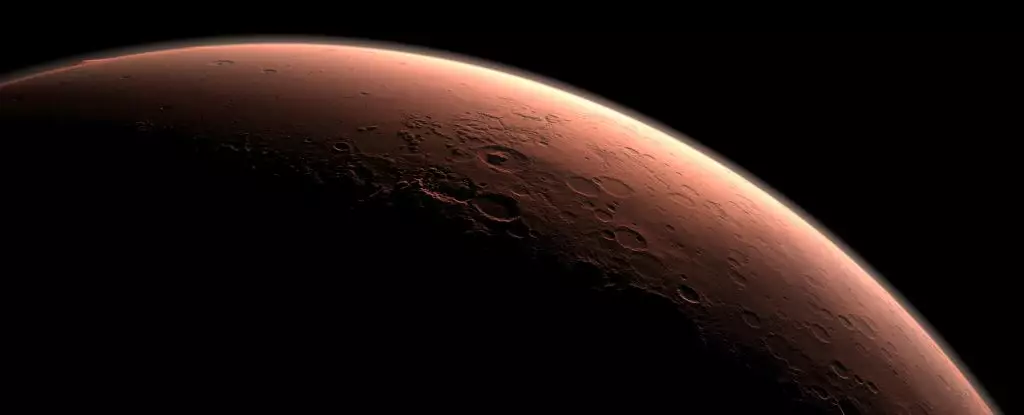Exploring the potential for life beyond Earth is one of humanity’s most provocative pursuits. Mars, with its intriguing landscape and history of water flow, has consistently captured our imagination. Since the Viking landers successfully touched down on the Martian surface in the 1970s, there has been a relentless investigation into whether microbial life could exist on our neighboring planet. To date, however, conclusive evidence supporting the existence of life on Mars has remained elusive. Despite this, voices in the scientific community, such as astrobiologist Dirk Schulze-Makuch of the Technical University Berlin, propose that our methods in the past might have inadvertently hindered our search.
The Viking missions represented a groundbreaking advance in our understanding of Mars. They were the first to conduct dedicated biological experiments aimed at uncovering the presence of life forms on another planet. Among their suite of tests was the gas chromatograph-mass spectrometer (GCMS), which analyzed Martian soil samples for organic molecules indicative of life. At the time, findings of chlorinated organics were initially thought to represent contamination, but they now hint at the presence of native Martian compounds. The ambiguity remains, however, regarding their origins—whether they stem from biological processes or not.
In re-evaluating these experiments, Schulze-Makuch suggests that a fundamental flaw may lie within their execution. Many of the Viking experiments required heating samples, a process that could easily have destroyed the very organics they aimed to detect. This potential destructiveness raises critical questions about the effectiveness and accuracy of past searches for life.
One prevailing assumption throughout the Viking experiments was that Martian life would exhibit characteristics similar to that of Earth. This was precarious, as the conditions on Mars are starkly different from those on our planet. The Viking landers conducted tests that poured liquid into dry Martian samples, based on the erroneous belief that liquid water would facilitate biological activity. However, Mars’ arid climate has led to life forms that are adapted to extreme dryness—a fact we only began comprehending more recently.
Schulze-Makuch paints an illustrative analogy where pouring water over a dry-adapted organism is akin to drowning it. If the microbes on Mars have optimized for desiccated environments, introducing water could have overwhelmed them. He likens this to rescuers misjudging the needs of a traveler in the desert by placing them in the ocean. This nuanced understanding of Martian life, or the possibility of it, suggests the need for an informed approach moving forward in our search.
The results from the Viking experiments indeed present a conundrum: while certain tests suggested positive indicators of microbial life, others did not align with these findings. Specifically, the contrast in outcomes from the pyrolytic release experiment (which detected signs of life under dry conditions) and the gas exchange experiment (which delivered null results) prompts a reevaluation of what could have been missed in our previous assessments.
If certain signs of life were detected in arid conditions, is it conceivable that we attributed false negatives to complex biochemical reactions that did not fit our Earth-centric framework? The Viking data could still hold valuable insights for potential Martian biology, if we approach the hypotheses with an open mind to alternative forms of life.
As humanity stands on the brink of sending more missions to Mars, there lies an essential imperative: we must design experiments with the understanding that Martian organisms may operate under entirely different biological principles. Learning from past shortcomings is crucial; Schulze-Makuch advocates for missions focused primarily on the search for life, employing methodologies that account for the unique environment of Mars.
Furthermore, he proposes that the potential existence of dry-adapted life forms—possibly utilizing unconventional resources like hydrogen peroxide—should not be ignored. The implications of this would necessitate a paradigm shift in how scientists conceptualize life, particularly in extraterrestrial environments.
The saga of searching for life on Mars is far from over. As we revisit the Viking missions and critically analyze their outcomes, we glean valuable lessons that can shape the future of astrobiological research on the red planet. Acknowledging the intricacies of Martian ecology and aligning our experimental designs with this understanding hold the key to potentially discovering life in the most unexpected of forms. As we embark on the next scientific odyssey to Mars, let us do so with the wisdom gleaned from decades of exploration and a renewed sense of wonder at the possibilities that await us.

